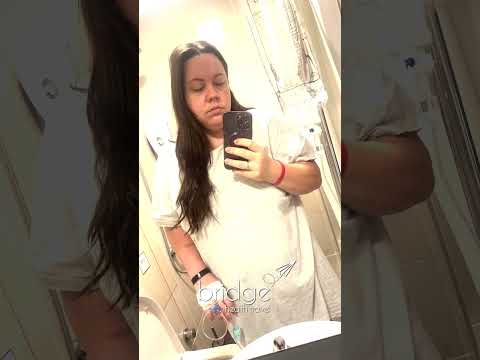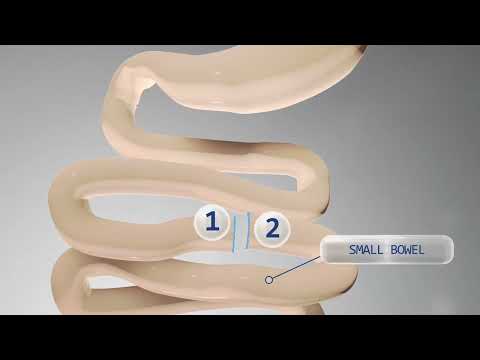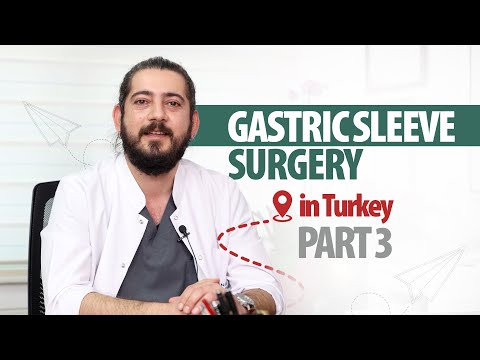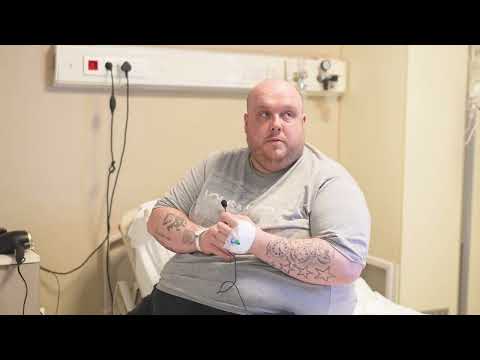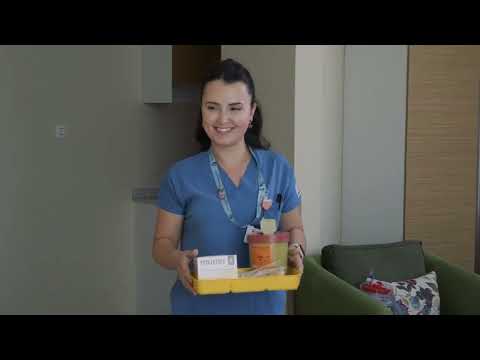Before and After Gastric Sleeve Surgery in Antalya, Turkey!
Calculate Your Cost / Price
Before and After Gastric Sleeve Surgery in Antalya, Turkey!
Gastric Balloon in Antalya, Gastric Balloon Prices, Gastric Balloon Treatment Antalya Turkey
What should I do for gastric balloon treatment in Turkey?
Which hospital is best for gastric balloon in Turkey?
-
How to prepare for gastric balloon?
Before insertion of the gastric balloon, you must fast from food and drinks for 12 hours. When the gastric balloon is to be removed, you must start on a fluid-only diet 48 hours beforehand. This means no solid food at all.
-
How do you qualify for gastric balloon?
Patients may be eligible for a gastric balloon if they have a BMI between 30 and 40, and they haven't been able to lose weight and keep it off with other weight-loss plans.
-
What to expect when you get a gastric balloon?
Pain and nausea affect about one-third of people soon after insertion of an intragastric balloon. However, these symptoms usually only last for a few days after balloon placement. Although rare, serious side effects may occur after intragastric balloon placement.
-
What do I eat in a day with a gastric balloon?
Continue to eat 3 regular meals each day and try not to leave more than 3-4 hours between meals.
EAT FIRST -Protein (meat, fish, poultry, eggs, beans, pulses)
EAT SECOND- Vegetables and salad.
EAT LAST - Carbohydrates (bread, rice, potato, pasta, grains)
-
How to sleep with a gastric balloon?
Once you have passed the initial few weeks following the gastric balloon procedure, you should be able to sleep normally. This means you can sleep on your back or on your side. Sleeping in these positions allows your body's natural digestive processes to function while you rest.
-
Can you eat bread with a gastric balloon?
Avoid anything doughy such as bread or chapattis as these can stick to the balloon. You can gradually start to include the 'caution foods'. Continue to drink between meals only and avoid sugary or fizzy drinks as before. Still aim for about 2 litres (3½ pints) each day.
-
How quickly do you lose weight with gastric balloon?
Losing Weight with a Gastric Balloon
You are likely to lose weight quickly, especially in the first three to four months of living with the gastric balloon. Typically, people lose about 10 to 15% of their body weight by the time the six-month program is complete.
-
Can you drink coffee with a gastric balloon?
This includes any fluid such as water, juices, milk, squash and soups. Tea and coffee are also allowed though should not be your main source of fluids. You should avoid drinks with too much gas. Fizzy drinks can cause a great deal of discomfort with a gastric balloon.
-
Can I fly with a gastric balloon?
Yes. Flying with a gastric balloon is perfectly fine. It will not burst or rupture on a commercial flight. Once you've recovered from the initial symptoms of having a placement you will be able to fly and enjoy your holiday as normal.
-
How long do you feel sick after gastric balloon?
Nausea and vomiting are very common in the first seven to ten days after gastric balloon insertion and this is simply because your stomach isn't used to having it there.
-
Is gastric balloon a good idea?
The gastric balloon procedure may be particularly useful for people considered too overweight to undergo vital surgery. The use of the balloon to successfully reduce weight prior to surgery can also help to reduce the risks associated with surgical procedures on overweight patients.
-
What happens if the gastric balloon pops?
Bowel obstruction and perforation are the most significant concerns if your balloon bursts. Symptoms such as severe abdominal pain, vomiting, or difficulty swallowing should never be ignored, as they may indicate a burst balloon.
-
Do you feel hungry after gastric balloon?
Approximately 90% of people have no appetite at all after the insertion of an intragastric balloon. In the first 10 days you will be restricted to a liquid diet, but most people do not feel hungry!
-
Who cannot have a gastric balloon?
Who is not a candidate for gastric balloon? Gastric balloon is not qualified to pregnant women, long-term cortisone users, those who are undergoing cancer treatment or those who have recently had cancer treatment.
-
How painful is a gastric balloon?
About one-third of patients have pain, nausea or discomfort in the first few days. Over-the-counter pain medication usually helps. Weight loss: You may not feel hungry the first couple of weeks, leading to rapid weight loss.
-
Can your body reject a gastric balloon?
It is important to remember that a BIB gastric balloon is a foreign object, meaning your body will attempt to reject it.
-
What is the age limit for gastric balloon?
To be eligible for gastric balloon, you must: Be at least 13 years old. Have a body mass index (BMI) ≥30 and ≤40 kg/m2. Have tried other weight-loss programs, such as a supervised diet or exercise regimen.
FQ About Gastric Balloon Clinic in Antalya / Turkey
The decision between sleeve gastrectomy and gastric bypass depends on a patients health and weight-loss goals. The sleeve is simpler and involves fewer complications but may result in less An inflamed stomach, or gastritis, is caused by irritation or damage to the stomach lining. It can be acute or chronic and may result from infections, excessive alcohol consumption, or prolonged use of NSAIDs. Symptoms include pain, nausea, and bloating, and treatment involves dietary changes, medication, and avoiding irritants... +More
The cost of gastric band surgery in the UK ranges from £1,450 to £8,000 at private clinics. The NHS may cover the surgery for patients who meet specific health criteria, such as a BMI over 40 or a BMI over 35 with obesity-related health conditions.
The death rate for gastric sleeve surgery in Antalya is extremely low, with rates similar to those in Western countries. With advancements in laparoscopic surgery and highly trained bariatric surgeons, the mortality rate is estimated to be less than 0.1%. Most complications are manageable and arise from issues such as leaks or infections.
Tummy illness refers to a range of conditions affecting the stomach, including gastroenteritis, ulcers, acid reflux, and food intolerances. Symptoms can include nausea, bloating, and abdominal pain. In cases of chronic or severe symptoms, consulting a gastroenterologist is essential for diagnosis and treatment.
You'll eat a soft diet between weeks three and four after surgery. During this phase, you'll continue to prioritize protein, but you'll be able to get the nutrient from foods including scrambled eggs, hummus, and tuna/chicken salad with low fat mayo. In addition, avoid the ancillary foods that can be even worse than the fast-food entrée itself. Sodas, french fries, other fried sides and even salad dressings can all contain tons of fat, sugar and ultimately calories The primary benefit of the mini gastric bypass is... +More
Antalya has established itself as a premier destination for gastric bypass surgery, with numerous positive reviews from patients who have undergone the procedure there. Many patients report dramatic weight loss and a significant improvement in obesity-related conditions such as diabetes and high blood pressure. Reviews often mention the professionalism of Turkish bariatric surgeons and the state-of-the-art facilities in which the procedures are performed. The affordability of gastric bypass in Antalya is a major... +More
Bread, Rice, and Pasta - Because of the starchy nature of bread, rice, and pasta, after your surgery, they can form a paste in your throat that is hard to swallow without liquid. In some cases, they can block the stoma, the hole to the pouch that is your new stomach. Currently, bariatric surgery is the most effective treatment for severe obesity and its metabolic complications; however, 1535% of the patients that undergo bariatric surgery do not reach their goal for weight loss Longer term risks and complications... +More
A full-body lift involves making multiple incisions around different target areas of the body. These incisions can be minor or severe and differ for each patient, depending on the amount and location of fat on their body. This makes the full-body lift an extremely personalized cosmetic surgery.Targeting a particular area, the surgeon makes an incision, exposing the underlying tissue and muscles. The extra fat, skin, and tissue are removed, followed by tightening of the muscles. The remaining skin is repositioned... +More
The cost of Roux-en-Y (RNY) gastric bypass surgery varies widely depending on the country, hospital, and insurance coverage. In the U.S., it typically ranges between $20,000 and $30,000. In the UK, the procedure may be covered by the NHS if the patient meets specific criteria, or it can be done privately for £8,000 to £15,000.
The gastric sleeve diet is crucial for recovery after sleeve gastrectomy and long-term weight loss success. Initially, the diet consists of liquids, gradually progressing to pureed foods, then soft foods, and finally solid foods. High-protein, low-carbohydrate meals are recommended to ensure proper nutrition and prevent weight regain.
Gastritis is inflammation of the stomach lining, while Irritable Bowel Syndrome (IBS) affects the intestines and causes chronic discomfort without inflammation. While both conditions involve digestive issues, gastritis typically causes nausea and upper abdominal pain, whereas IBS presents with bloating, diarrhea, or constipation.
Pages
-
£ 1580£ 1450GASTRIC BALLOON PROCEDURE PACKAGE
Give a call to learn more about what’s included and to come up with a tailored plan if you need unique accommodations that are not listed below.
- Airport
- Hotel
- Hospital transfer
- The balloon is placed via endoscopy, the procedure takes 15-20 minutes and you are discharged after 2-3 hours. It is enough to stay here for 1 night.
- Blood samples & x-rays
- 5 year follow up
-
£ 2750£ 2550GASTRIC SLEEVE PACKAGE
GASTRIC SLEEVE PACKAGE COST TURKEY / ANTALYA
Give a call to learn more about what’s included and to come up with a tailored plan if you need unique accommodations that are not listed below.- Airport
- Hotel
- Hospital transfer
- 4 day stay at hospital
- Blood samples & x-rays
- 5 year follow up
-
£ 3100£ 2900MINI GASTRIC BYPASS PACKAGE
MINI GASTRIC BYPASS PACKAGE TURKEY
Give a call to learn more about what’s included and to come up with a tailored plan if you need unique accommodations that are not listed below.- Airport
- Hotel
- Hospital transfer
- 4 day stay at hospital
- Blood samples & x-rays
- 5 year follow up









